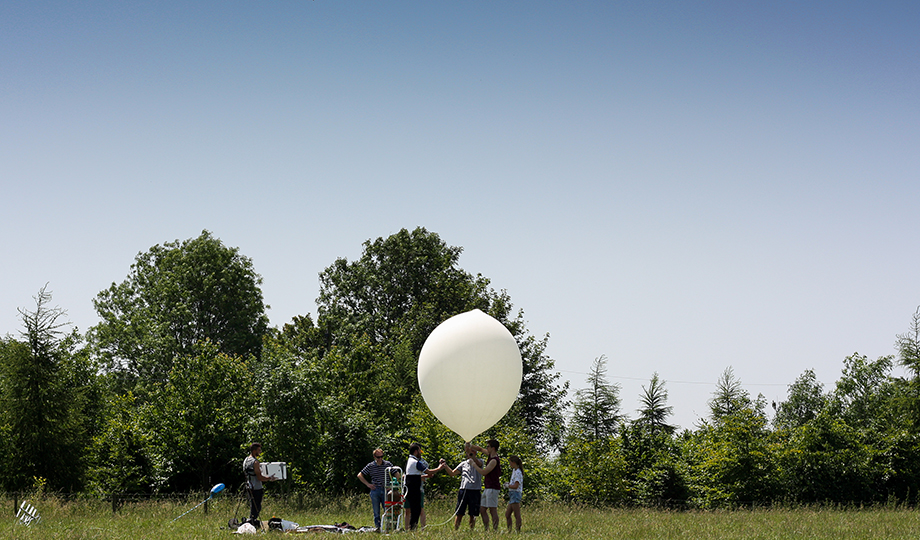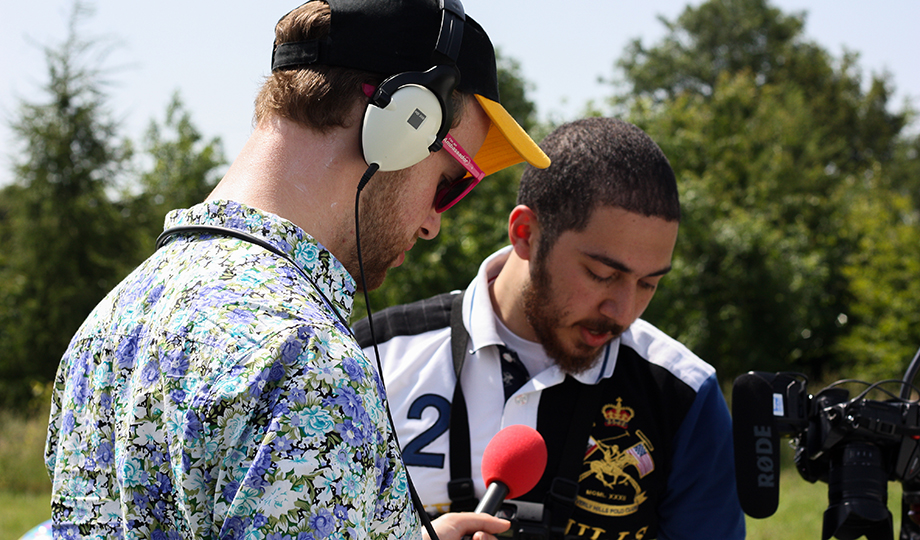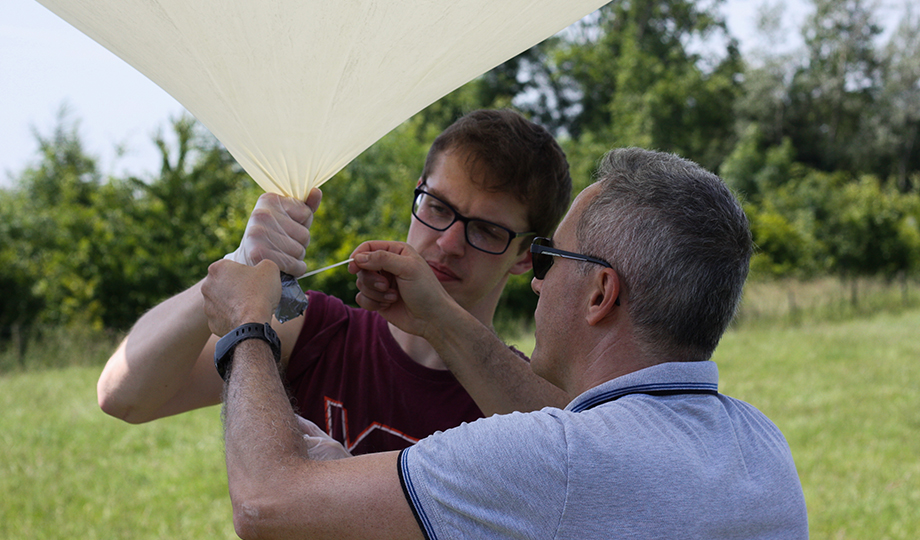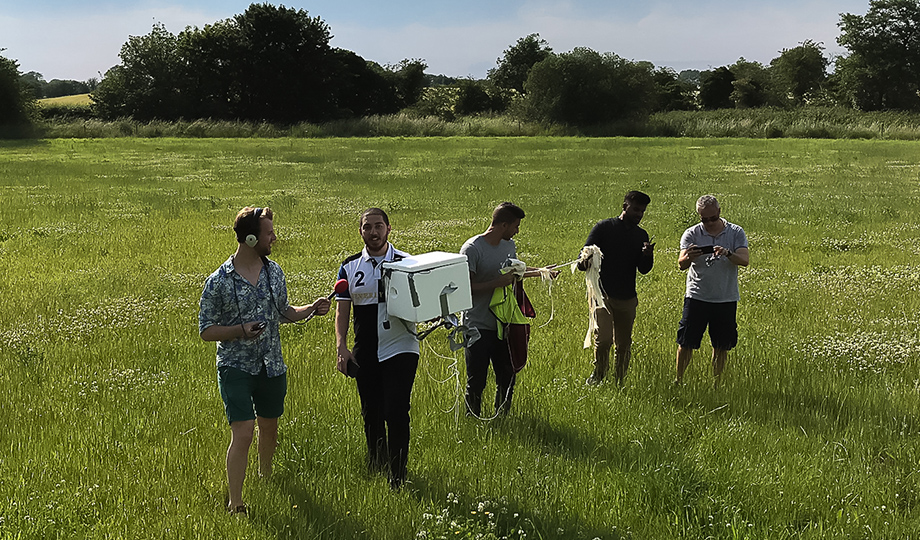The old tagline ‘in space no one can hear you scream’ has been confirmed by a South African mother loudly shouting for her children to tidy their room from 33,000 metres above the ground. Or not so loudly, as the case appears to be.
The experiment, carried out by a graduate engineer from Brunel University London and the BBC Radio show “The Naked Scientists”, involved sending a microphone and speaker on a custom-built ‘Screaming Satellite’ to near-space to test how high-up the scream could still be heard.
People from all over the world were challenged with sending in screams and yells, with a selection of the best ultimately selected for the mission. Amongst those making the flight was Noha from South Africa, who proposed the team send a recording of her scolding her kids with a scream of “Children! Come and clean your room.”
<iframe width="560" height="315" src="https://www.youtube.com/embed/dEs_kfGE7Cg" frameborder="2" allow="accelerometer; autoplay; encrypted-media; gyroscope; picture-in-picture" allowfullscreen></iframe>
Science suggests that as the payload’s altitude increases - and the air becomes correspondingly thinner - the level of the sound picked up by the microphone should decrease.
This is because sound waves are carried by air molecules bumping into one another and the microphone. So as the air pressure drops, and there are progressively fewer particles capable of carrying the sound, the number of molecules hitting the microphone decreases leading to a quieter recording.
This phenomenon was alluded to by the marketers of the 1979 sci-fi horror Alien, who coined the famous tagline, “in space no-one can hear you scream.”
And it does indeed appear to be the case the no one can hear you scream in space, as by the time the device’s launch balloon burst at 33 kilometres above the Earth – the altitude at which there is only about 3/1000th of the amount of air press as at ground level – the screams, which were initially loud at ground level were only just audible.

The payload was launched from a field outside Bath
The whole idea started as the pet project of recent electrical engineering graduate Omar Gad, who wanted to send up a payload of off-the-shelf parts to near-space to demonstrate what can be achieved with a tiny budget.
“I’ve always been an advocate of technology and trying to push hardware to its limits – like exposing it to a harsh environment like the weather in space,” said Mr Gad, who was celebrating his 23rd birthday on the day of the launch.
“Everything I had onboard is affordable and available to the public – almost the entire list of stuff that’s in the box I bought off Amazon! For example, the telemetry device [that enabled the team to track the balloon’s journey from the ground] has a range of over 500 kilometres and cost just £15. It’s quite cheap and affordable and just shows how far we’ve come with technology and innovation. You can buy these sensors and transmitters and send them to space to actually gather decent weather data. The whole project only cost about £250.”
To “actually add a purpose to the project,” Mr Gad got in contact with Dr Chris Smith, host of the Cambridge University-based podcast and BBC radio show The Naked Scientists, to ask if he’d like to use the launch as an opportunity to run an audio experiment for his show.
“There’s this claim than no one can hear you scream in space, so I suggested to Omar that we could test the physics of how sound is transmitted through a gas, and actually work out whether or not the sound does disappear as the gas gets thinner with altitude,” says Dr Smith, whose shows are broadcast on BBC Cambridgeshire and BBC 5 Live in the UK, in South Africa, on the ABC across Australia, and worldwide as a popular podcast.
The speaker and microphone were mounted on a special rig to isolate them from one another
To ensure that the sound vibrations coming out of the speaker were not simply transferred to the microphone through the polystyrene box containing the device, a rig had to be devised specially by science exhibition-builder Dave Ansell, a regular on The Naked Scientists, to isolate the two devices between sets of springs.
“The key thing here was that if we had just put a speaker in a box, then the vibrations could come out of the speaker and transmit through the box to the microphone – which is also stuck to the box – and which would just be a cheat, and wouldn’t have tested sound transmission through air,” said Dr Smith. “It would be like the sound equivalent of a short circuit.”
 Omar Gad talks Naked Scientists producer Phil Sansom through the mission
Omar Gad talks Naked Scientists producer Phil Sansom through the mission
The mission, which began just outside Bath and ended after a two-hour chase in a field a few miles south of Wolverhampton, carried a more serious purpose too, as the payload also housed a sensor built by Cambridge scientists to measure atmospheric changes.
The bespoke device not only measured carbon monoxide and carbon dioxide as it ascended, but also captured the concentrations of ozone as the payload screamed its way through the ozone layer.
 Dr Konstantinos Banitsas prepares the balloon for launch with Naked Scientists intern Matthew Hall
Dr Konstantinos Banitsas prepares the balloon for launch with Naked Scientists intern Matthew Hall
Disaster almost struck on the way back down though, when two of the device’s three tracking systems failed as it returned to earth on a parachute, but it was eventually tracked down to a farmer’s field by using Android’s Find My Phone feature, which was installed on a phone left onboard to shoot video footage.
“It was descending quite rapidly and was hidden by the horizon,” said Dr Konstantinos Banitsas, Mr Gad’s former lecturer at Brunel who originally inspired him to launch the balloon. “And then when it landed the box fell over, so the satellite antenna was facing the ground.
“So, we lost two of the three means of finding it and were down to the last resort. At first the Find My Phone thing gave us a very big circle, and if it’d stayed like that we wouldn’t have been able to find it. But as the minutes passed it started to read it more and more accurately – and then it pin-pointed it right here, in the middle of a field.”

The payload was retrieved from a field just south of Wolverhampton after a two hour chase
The device had stopped screaming by the time it hit the ground, but ultimately it returned unscathed from its intrepid mission. It’s not known if the children have tidied their room yet.
“It’s not every day you go on the radio and say to people, ‘right, its your chance to send a scream to space,’” said Dr Smith, who first broadcast the results – now available on the Naked Scientists podcast at https://www.thenakedscientists.com – of the project on Tuesday evening.
“Probably half a million people plus heard us appeal for a scream – so we had quite a lot of entries in. I think I’ve probably suffered irreparable hearing damage because of this.”
To find out more about Electrical Engineering at Brunel, visit: brunel.ac.uk/study/undergraduate/Electronic-and-Electrical-Engineering-BEng
Reported by:
Tim Pilgrim,
Media Relations
+44 (0)1895 268965
tim.pilgrim@brunel.ac.uk